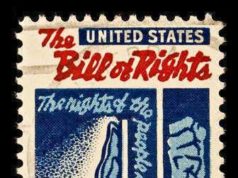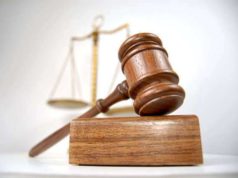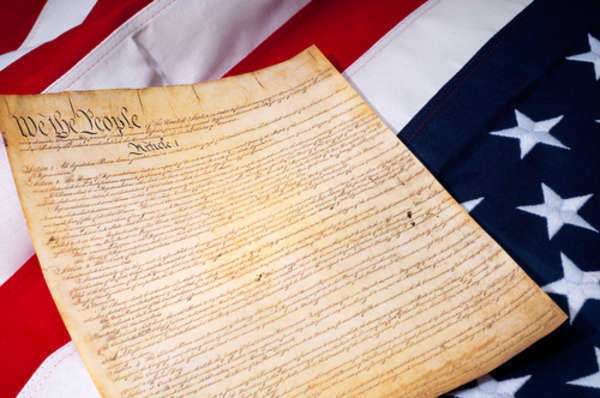Table of Contents
- 1 Who Wrote the Bill of Rights: A Comprehensive Exploration
- 2 Who Wrote the Bill of Rights?
- 2.0.1 Who Wrote the Bill of Rights?
- 2.0.2 James Madison: Who Wrote the Bill of Rights?
- 2.0.3 George Mason: Who Wrote the Bill of Rights?
- 2.0.4 Who Wrote the Bill of Rights? – An Exploration
- 2.0.5 1st Amendment
- 2.0.6 2nd Amendment
- 2.0.7 3rd Amendment
- 2.0.8 4th Amendment
- 2.0.9 5th Amendment
- 2.0.10 6th Amendment
- 2.0.11 7th Amendment
- 2.0.12 8th Amendment
- 2.0.13 9th Amendment
- 2.0.14 10th Amendment

Who Wrote the Bill of Rights: A Comprehensive Exploration
Introduction
The Bill of Rights stands as a cornerstone of American democracy, protecting the fundamental rights and liberties of its citizens. But who exactly wrote this crucial document, and what were the circumstances surrounding its creation? In this article, we delve into the history of the Bill of Rights, its authors, and the broader context in which it emerged, using government resources to shed light on this pivotal piece of American history.
The Birth of a Nation
The United States of America emerged from the crucible of revolution, as American colonies, tired of British oppression, sought to establish their own nation. In the aftermath of the American Revolutionary War and the adoption of the U.S. Constitution in 1787, there were growing concerns that the Constitution did not sufficiently protect individual liberties. As a result, there was a widespread demand for a bill of rights that would explicitly outline and safeguard these rights.
James Madison: The “Father” of the Bill of Rights
While the idea of a bill of rights was widely supported, the person most responsible for drafting and shepherding it through the legislative process was James Madison. Madison, often referred to as the “Father of the Bill of Rights,” played a central role in its creation.
Madison, a Virginian and one of the framers of the U.S. Constitution, was deeply committed to the cause of individual liberties. He believed that a bill of rights was essential to protect citizens from potential abuses of government power. Madison’s determination and persuasive abilities led to his selection as the primary architect of the Bill of Rights.
The First Congress and the Amendment Process
In 1789, the First Congress of the United States convened in New York City. One of its first orders of business was to address the demand for a bill of rights. Madison, now a Congressman, introduced a series of amendments to the Constitution, aiming to address the concerns of those who feared the potential for federal overreach.
Madison’s original proposal consisted of 17 amendments. These amendments were meticulously debated and scrutinized by Congress, and in the end, 12 were approved and sent to the states for ratification. On December 15, 1791, after being ratified by three-fourths of the states, ten of these amendments became the Bill of Rights, officially becoming part of the U.S. Constitution.
Key Bill of Rights Amendments
1. The First Amendment: Protecting Freedom of Speech, Religion, and the Press
The First Amendment is arguably the most well-known and cherished part of the Bill of Rights. It guarantees the freedom of speech, religion, and the press, and it allows citizens to peacefully assemble and petition the government for redress of grievances.
2. The Second Amendment: The Right to Bear Arms
The Second Amendment grants Americans the right to keep and bear arms. This amendment has been the subject of significant debate and legal interpretation, with discussions about the extent of this right and its implications in modern society.
3. The Fourth Amendment: Protection Against Unreasonable Searches and Seizures
The Fourth Amendment safeguards against unreasonable searches and seizures by law enforcement. It requires authorities to obtain warrants based on probable cause before searching a person’s property or belongings.
4. The Eighth Amendment: Prohibiting Cruel and Unusual Punishments
The Eighth Amendment prohibits the imposition of cruel and unusual punishments. This amendment has been critical in shaping the criminal justice system in the United States.
Legacy of the Bill of Rights
The Bill of Rights has had a profound and enduring impact on the United States. It has served as a bedrock of American democracy, protecting the rights and freedoms of its citizens for over two centuries. Its principles have been cited in countless legal cases and have influenced the development of constitutional law.
In recent years, debates about the interpretation and application of the Bill of Rights have continued to evolve. Issues such as the right to bear arms, freedom of speech in the digital age, and the balance between national security and personal privacy have all sparked vigorous discussions about the relevance and scope of these constitutional protections.
Conclusion
The Bill of Rights, often referred to as the first ten amendments to the U.S. Constitution, was crafted by James Madison and ratified in 1791. It stands as a testament to the enduring commitment of the United States to protect the individual rights and liberties of its citizens. The Bill of Rights has been a guiding force in American democracy, shaping legal principles, and serving as a beacon of freedom for generations.
As we continue to grapple with the challenges and complexities of modern society, the Bill of Rights remains a cornerstone of American governance, reminding us of the importance of safeguarding our cherished freedoms. The ongoing debates about the interpretation and application of these rights demonstrate their continued relevance and the enduring legacy of those who wrote the Bill of Rights over two centuries ago.
Who Wrote the Bill of Rights?
The Bill of Rights is the first ten amendments to the United States Constitution. It was written in 1789 and became effective in 1791. This document is an essential part of American history and is viewed as one of the most significant documents ever written. But who really wrote the Bill of Rights? We’ll explore the origin of this document here.
The First Draft
When the Constitution was drafted in 1787, there was much debate about whether it protected individual rights. Few delegates were initially willing to cede power to a national government that did not have explicitly enumerated powers and were even less inclined to protect the rights of individuals explicitly.
The Bill of Rights was proposed to rectify this situation. The United States Congress drafted it, with James Madison, also known as the Father of the Constitution, as the principal author. In 1788, Congress submitted twelve amendments to the Constitution to be ratified by the states, the last ten of which became the Bill of Rights.
James Madison’s Role
James Madison is often credited as the author of the Bill of Rights. In addition to playing a central role in drafting the Constitution, Madison was a key figure in the development of the Bill of Rights.
Madison was a member of Congress when the Constitution was drafted, and he was instrumental in drafting the Bill of Rights. He also played a key role in ensuring its adoption by the states. At the time, there was considerable opposition to the Bill of Rights, and Madison played a critical role in convincing the necessary states to ratify it.
Madison based the Bill of Rights on the English Bill of Rights, which was enacted by Parliament in 1689. The English Bill of Rights protected individual rights and prohibited the monarch from acting without the consent of Parliament.
Madison believed that the Constitution needed to be amended to include a Bill of Rights to protect individual rights. He wanted to ensure that people’s rights were protected against an overbearing national government, which was one of the main criticisms of the Constitution when it was first proposed.
The Debate
The Bill of Rights was not without controversy. While many people supported it, others were concerned that explicitly listing individual rights would imply that the government could infringe on non-listed rights. It was also feared that the amendments would weaken the federal government’s ability to govern.
Some argued that the Constitution already protected individual rights and that enshrining them in the Bill of Rights was redundant. Others argued that a Bill of Rights was necessary to ensure that the Constitution did not become an instrument of tyranny.
The influence of Thomas Jefferson, John Adams and George Mason cannot be understated. Jefferson, while in France, wrote to Madison that the rights of men were spelled out in the Declaration of Independence, and that no other document would be necessary. Mason, however, held that liberty could not be absent from a constitution, and that all of the protections already argued for during the constitutional convention should be presented in a single document. Adams argued that inclusion of such amendments would make future generations believe that they had more rights than any other previous generation, and too much liberty could lead to anarchical chaos.
The compromises finally reached were listed in ten articles, or amendments, that were presented on September 25, 1789 for ratification by the states.
The Bill of Rights
The Bill of Rights contains ten amendments that were added to the Constitution to protect individual rights. The first amendment protects freedom of speech, religion, press, assembly, and petition. The second amendment protects the right to bear arms. The third amendment prohibits the government from quartering soldiers in homes without the owner’s permission.
The fourth amendment protects against unreasonable searches and seizures. The fifth amendment protects the right to a grand jury, protection from self-incrimination, double jeopardy, and the right to due process. The sixth amendment guarantees the right to a fair and speedy trial, an impartial jury, and the right to counsel. The seventh amendment protects the right to a trial by a jury of one’s peers. The eighth amendment prohibits excessive bail and fines and the infliction of cruel and unusual punishment.
The ninth amendment provides for unenumerated rights retained by the people, and the tenth amendment reserves powers not delegated to the United States by the Constitution, nor prohibited by it to the states, to the states or to the people.
The Significance of the Bill of Rights
The Bill of Rights is an essential part of American history. It demonstrates the importance of protecting individual rights and serves as a reminder of the struggles of the founding fathers in balancing those rights with the need for a strong federal government.
The Bill of Rights was also the first time that a government had explicitly recognized the importance of individual liberty and placed limits on government power. In doing so, the Bill of Rights set a standard for democratic governments around the world.
Since its adoption in 1791, the Bill of Rights has been used by the courts to protect individual rights. For example, the Supreme Court has invoked the First Amendment to protect freedom of speech, the Fifth Amendment to protect against self-incrimination, and the Fourteenth Amendment to ensure equal protection under the law.
Conclusion
The Bill of Rights is one of the most important documents in American history, enshrining the individual rights that are so central to American democracy. James Madison was instrumental in drafting the Bill of Rights, but there were many others who contributed to its development.
The Bill of Rights was not without controversy, but it ultimately helped to balance the need for a strong federal government with the protection of individual rights. Today, the Bill of Rights continues to serve as a reminder of the importance of protecting individual liberties in democratic societies around the world.
Who Wrote the Bill of Rights?
When posed with the question ‘Who Wrote the Bill of Rights?’ the answer may prove to be fairly ambiguous in its delivery; although historians vary with regard to their respective responses to this question, George Mason and James Madison are considered to be amongst the 2 primary candidates with regard to the authorship of the Bill of Rights.
Another common question is “who wrote the Constitution of the United States of America”, the answer is, many of the same authors are responsible for this document.
James Madison: Who Wrote the Bill of Rights?
James Madison – alongside James Madison – is credited with both the creation, as well as the conception of the Bill of Rights; as a result of his notice of the absence of a Constitutional Clause providing a system for both the amendment and adjustment of the original text, a clause was subsequently created rectifying these concerns – the actions of James Madison resulted in the proposal of the Bill of Rights in 1789, as well as its subsequent ratification in 1791.
George Mason: Who Wrote the Bill of Rights?
George Mason was a delegate from the state of Virginia, who is credited alongside James Madison with the passing – and subsequent creation – of the Bill of Rights; Mason is noted for his refusal to sign the Constitution. George Mason considered the fact that the Constitution lacked a clause that allowed for the passing of amendments, the addition of this clause would become the Bill of Rights.
Who Wrote the Bill of Rights? – An Exploration
The Bill of rights not only outlined a framework for a legislative system, but also mandated an identifiable statute with regard to alterations, adjustments, and modifications to the original text; the following is an exploration of the first 10 Constitutional Amendments – also known as the bill of Rights:
1st Amendment
Date Proposed: September, 25th 1789
Date Ratified: December 15th, 1791
Contents of the Amendment: This Amendment affords citizens of the United States with the freedom of religion, the freedom of the press, the freedom of speech, and the right of assembly
2nd Amendment
Date Proposed: September, 25th 1789
Date Ratified: December 15th, 1791
Contents of the Amendment: The right to bear arms in a lawful manner with regard to self-protection; firearms covered under the 2nd Amendment do not address service within the Militia
3rd Amendment
Date Proposed: September, 25th 1789
Date Ratified: December 15th, 1791
Contents of the Amendment: The 3rd Amendment prohibits unlawful entry with regard to the private resident(s) in possession of citizens of the United States of America; the 3rd Amendment is not typically applicable to times of war
4th Amendment
Date Proposed: September, 25th 1789
Date Ratified: December 15th, 1791
Contents of the Amendment: The 4th Amendment prohibits the unlawful search and seizure of resident belonging to citizens of the United States of America; this amendment also defines the rights of privacy awarded to citizens of the United States
5th Amendment
Date Proposed: September, 25th 1789
Date Ratified: December 15th, 1791
Contents of the Amendment: The 5th Amendment addresses the modern incarnation of the ‘Right to remain silent’; this Amendment also prevents the unlawful and unethical abuse of power undertaken by a governing body
6th Amendment
Date Proposed: September, 25th 1789
Date Ratified: December 15th, 1791
Contents of the Amendment: The 6th Amendment addresses legal procedure undertaken with regard to the prosecution – and investigation – of alleged criminal activity; this Amendment includes the right to a judicially-sound trial
7th Amendment
Date Proposed: September, 25th 1789
Date Ratified: December 15th, 1791
Contents of the Amendment: The 7th Amendment affords individuals undergoing judicial trials with the right to be tried in accordance with the presence of a jury; juries present within judicial trials are indicated to consist of an individual’s ‘peers’
8th Amendment
Date Proposed: September, 25th 1789
Date Ratified: December 15th, 1791
Contents of the Amendment: The 8th Amendment addresses legal criminal procedure; this Amendment prohibits punitive recourse classified as ‘cruel and unusual’ with regard to prosecution, as well as the prohibition of an excessive bail process
9th Amendment
Date Proposed: September, 25th 1789
Date Ratified: December 15th, 1791
Contents of the Amendment: The 9th Amendment serves as legislative protection with regard to corollary Amendments within the Bill of Rights; this Amendment disallows for the violation of civil liberties and unlawful expansion of governmental power
10th Amendment
Date Proposed: September, 25th 1789
Date Ratified: December 15th, 1791
Contents of the Amendment: The 10th Amendment addresses the apportionment process latent within administrative responsibilities; this Amendment expressed that any or all administrative powers that have not been claimed by Federal or State governments become the responsibility of the general populace
























